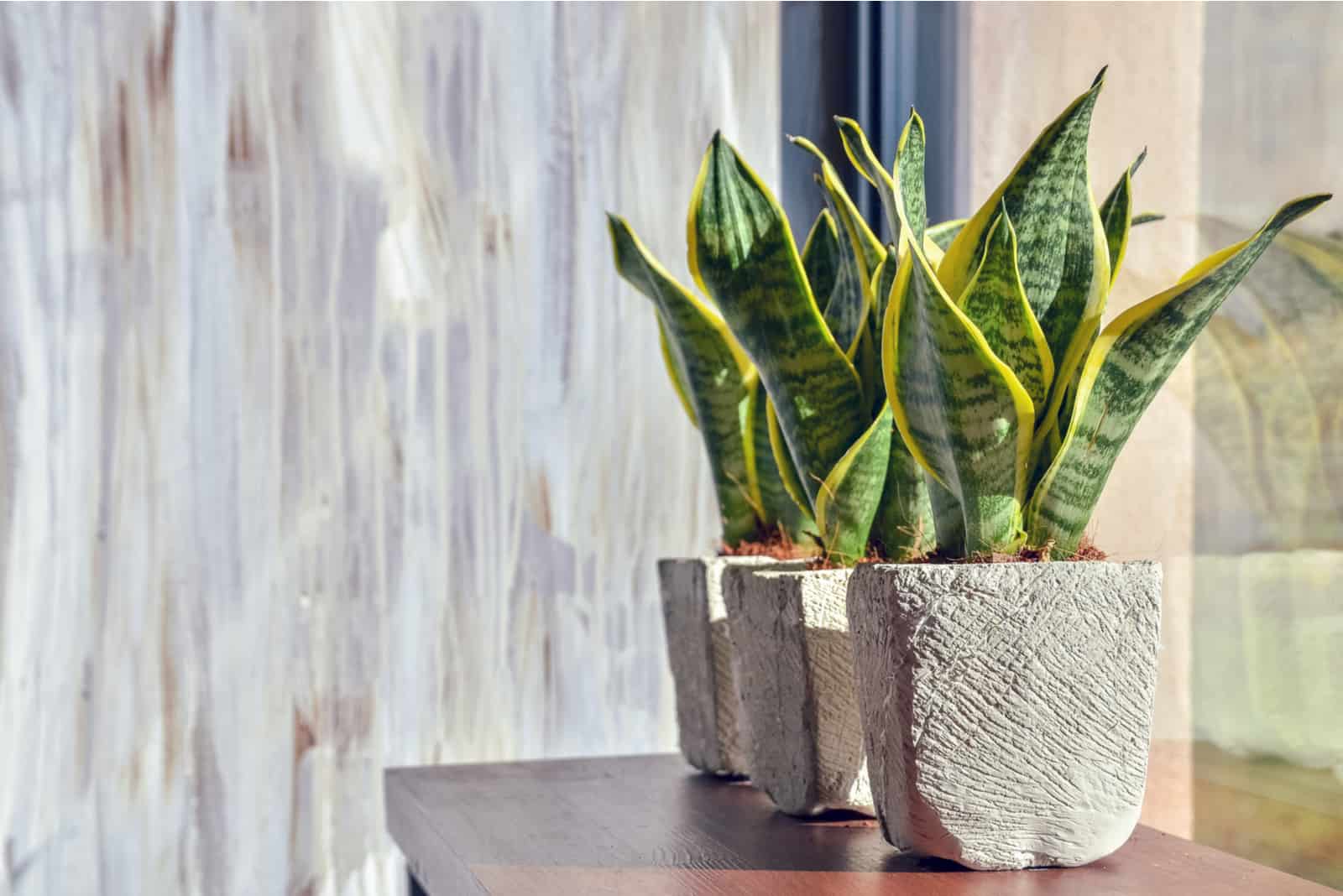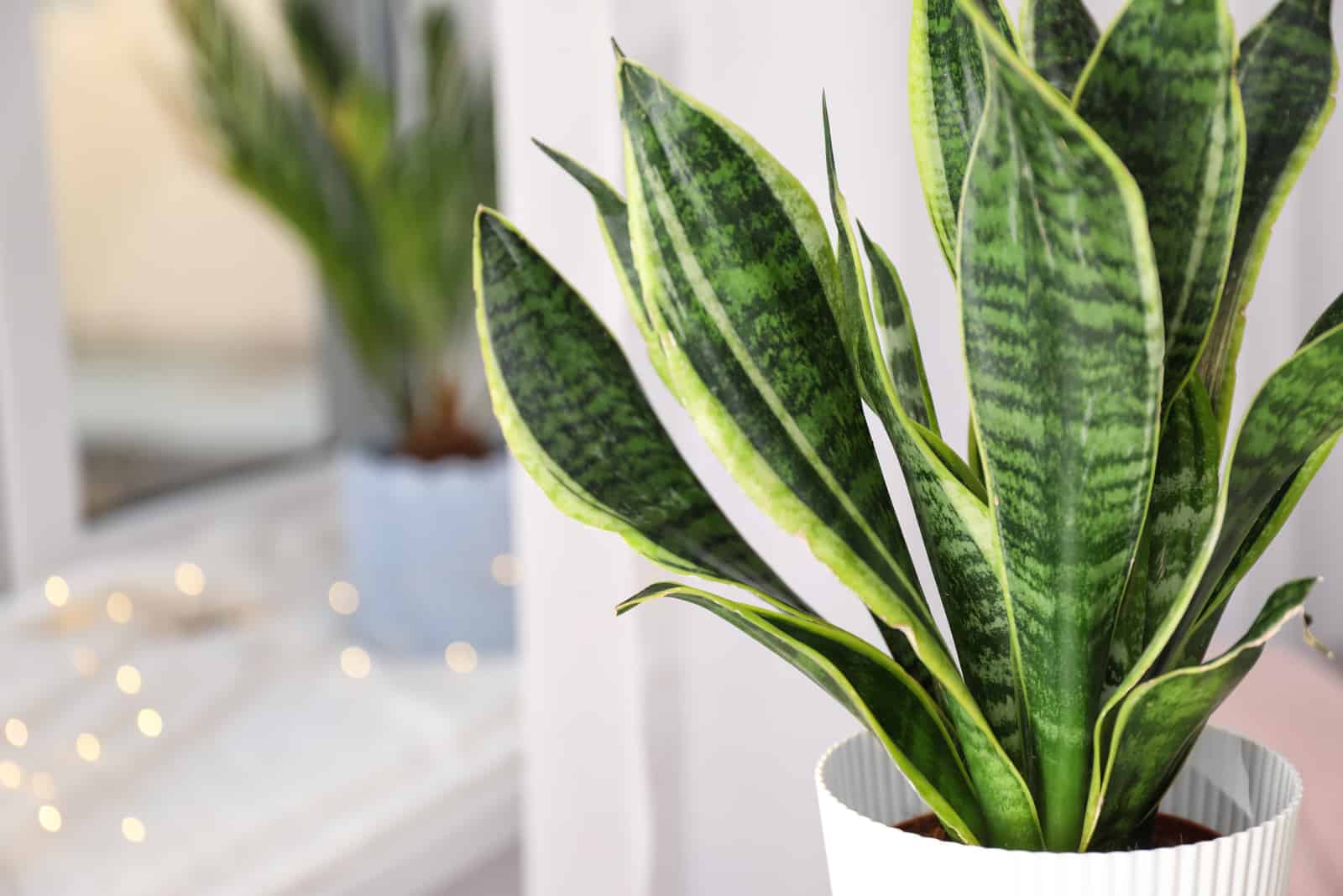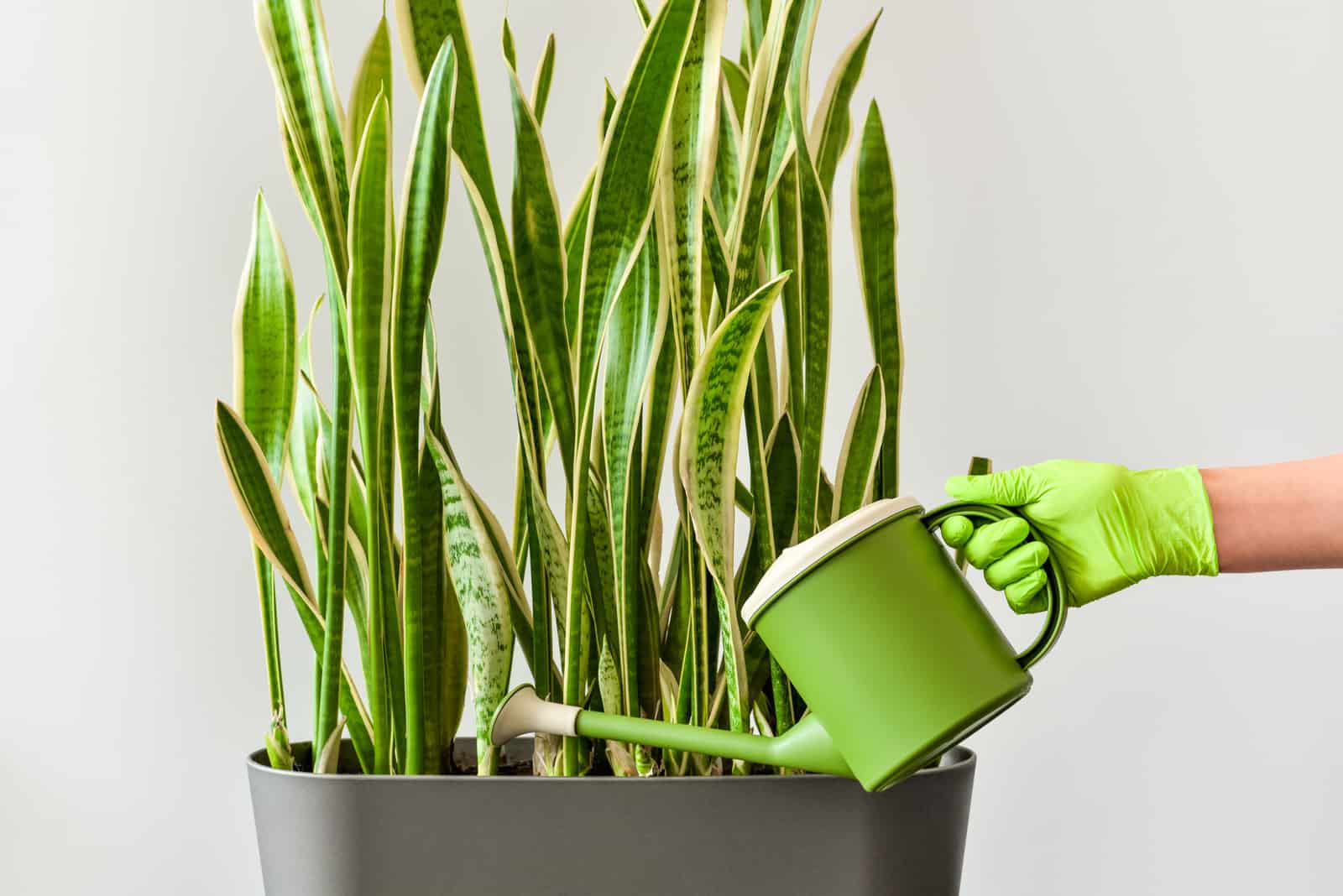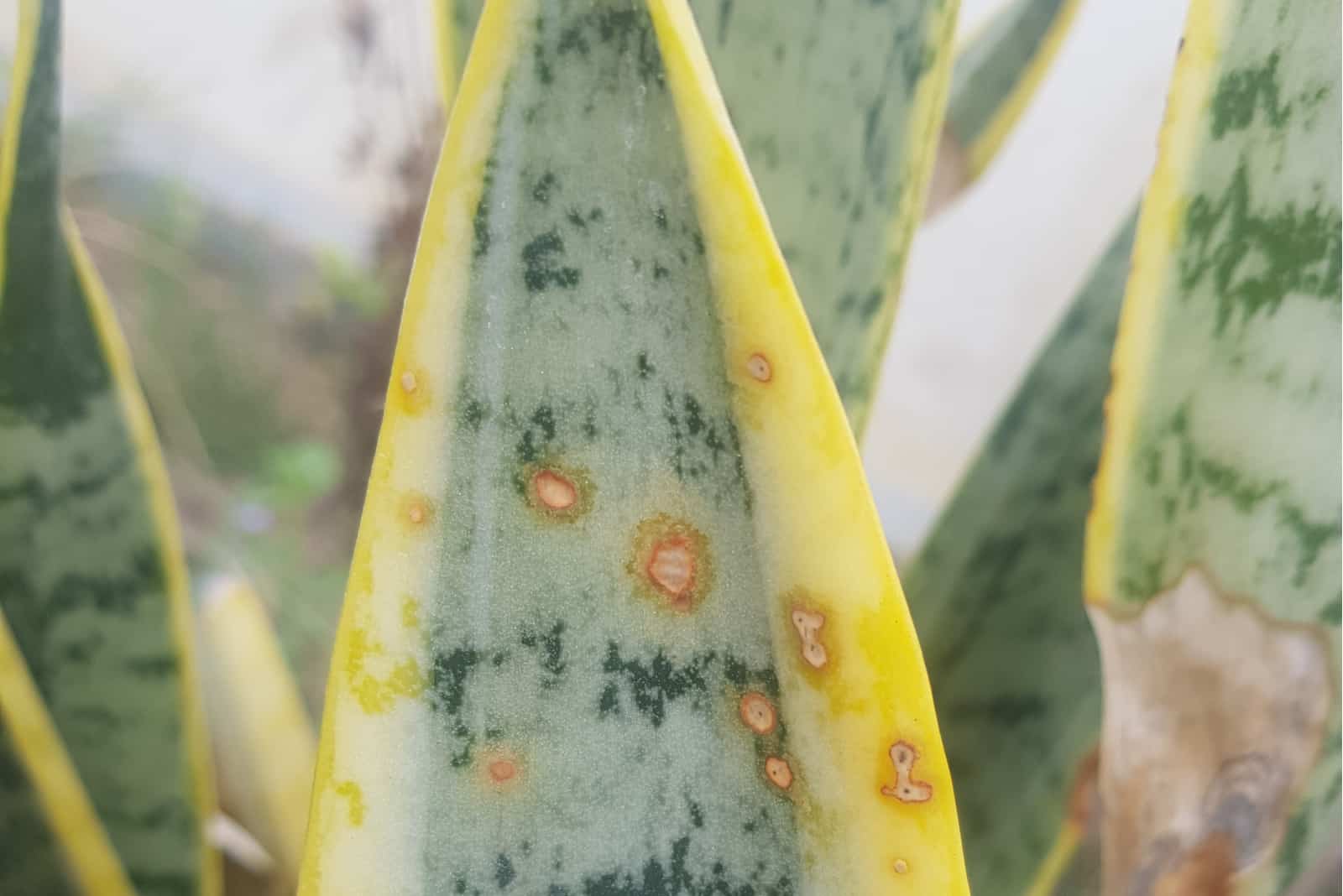Snake plants are one of the most popular houseplants, and for good reason!
These plants are great for gardener newbies because of their simple plant care requirements and straightforward propagation. I bought my first snake plant at the beginning of my gardening journey .
They are very hardy and low-maintenance plants, and it has been proven by NASA that they have the ability to purify the air, not to mention that their unique features are great for home decor!
Of course, it is our goal to keep our plants happy and thriving, so we have to provide them with the best possible care. Even though your snake plant can tolerate various conditions, sudden temperature fluctuations can harm it.
Let’s take a closer look into snake plant temperature tolerance , and give your plant the growing conditions it needs to thrive!
Snake Plant Temperature Tolerance
The snake plant , otherwise known as Sansevieria Trifasciata or Mother-in-law’s tongue , is a tropical plant that originates from Southern Asia and the Island of Madagascar. When we think about tropical regions, we often think about the sun, warm climate, and humid environment.
The best plant care is to mimic its natural habitat!
As snake plants are known for being hardy and able to tolerate various conditions, do they have to still be kept in warm temperatures, or can they tolerate lower temperatures?
Let’s find out!
What Is The Best Temperature For Snake Plants?
Keeping your plants at suitable temperatures is crucial for maintaining their health, especially if they are sensitive to sudden temperature changes.
Sometimes, unfavorable temperatures can cause various issues like stunted growth or even completely destroy your plant.
Just think about the temperatures in their natural habitat, especially because they originate from Africa where it’s extremely hot!
Therefore, it is important to keep your Sansevieria plants in a temperature range from 65 to 85 degrees Fahrenheit. However, this can differ a bit, particularly during summer and winter.
They can tolerate temperatures of about 100 degrees Fahrenheit during summer , while they can also survive in temperatures of about 45 degrees Fahrenheit during winter.
This is why we say that the Sansevieria is a hardy plant , I mean, just look at their temperature tolerance !
For the happiest snake plants, keep them in their preferred temperatures and protect them from sudden temperature changes!
What Temperature Is Unsuitable For Snake Plants?
Ideally, the temperature should always be above 50 degrees Fahrenheit to keep your snake plant happy and healthy. However, they can tolerate temperatures as low as 41 degrees Fahrenheit!
However, if you keep your plant at low temperatures for too long it will definitely suffer . Some of the issues include stunted growth, snake plant leaves wilting and turning brown, and root rot. All this is especially important during winter, which is why the soil should be kept dry during winter.
Can You Grow Snake Plants Outside?
Yes, many gardeners plant these tropical plants in their outdoor gardens. However, you should always consider the plant’s needs — remember, they are tropical and require warmer temperatures to grow happy and healthy.
Therefore, if you live in an area where the temperature often drops below 50 degrees Fahrenheit, I would suggest you grow it as an indoor plant.
Folks that live in regions where the climate is warm all year round tend to use snake plants to create mini jungles in their garden. These types of plants are usually grown in containers outdoors, although some gardeners put them directly into the ground.
You can do it too, and it is important to use proper soil and to give them enough water. However, I think it’s better to grow them in containers because you can always bring them indoors if the temperature drops lower than 50 degrees Fahrenheit.
If you live in an area that has particularly cold periods, you should avoid planting snake plants outdoors.
How To Take Care Of Snake Plant During Winter
You should provide special care for this tropical plant during the winter. First and foremost, you should bring it inside if you have been growing it outdoors.
A special thing about this plant is that it enters dormancy in winter, which means that it stops growing and absorbing nutrients and water as much. At this point, it requires alternative plant care.
Let’s do a quick review!
Watering Requirements During Winter
Even during summer, this succulent -like plant doesn’t like water too much and can tolerate long drought periods. Frequent watering can easily lead to overwatering , which is one of the main snake plant disadvantages.
They stop growing during the winter months , so they won’t be needing much water. They can even go for a full month without watering!
I recommend you always check if the soil has dried before watering. If so, then go ahead and water your little snake, and postpone watering for a few days if not.
It is also important that the pot has drainage holes at the bottom for excess water to leave the pot , which prevents root rot .
Light Requirements During Winter
Snake plants are usually kept near windows because they enjoy being in bright light and can even be kept in various light conditions , including direct sunlight , indirect sunlight , and areas with low light (this is why they are perfect office plants !).
However, if they are kept near windows during winter they could be exposed to cold drafts and freezing temperatures from the outside, which can cause cold damage.
This is never a good option, and you should find another place for your snake plant in this case . It’s good that they can be kept in indirect light because you can put them in the corners of your room.
Bear in mind that they are mildly toxic, so keep them out of the reach of pets and kids!
Avoid putting them near radiators and space heaters during the winter months as the heat can also damage your plant.
Fertilizer Requirements During Winter
You will have to provide your plant with some plant food and fertilizer, but only during the growing season!
They require some diluted fertilizer to keep them growing and blooming, but fertilizers should be completely avoided during dormancy.
This is because you can easily over fertilize them, which can make your plant leggy, wilted, and burned. Over fertilization during the growing season might be the reason your snake plant is not growing , and in this case repotting is a must!
Humidity Requirements During Winter
Keep in mind that you’re dealing with a succulents -like plant, which doesn’t fare well in highly humid conditions. Humidity levels of around 80% can shock your plant, resulting in adverse growth conditions.
One of the main advantages of growing snake plants indoors, in addition to using them for ornamental purposes, is that they can absorb all kinds of toxins from the air and work as air purifiers.
However, it can take water from the air, and if the humidity levels are too high this will result in excessive water absorption. Your plant may exhibit the same symptoms as overwatering in this case .
However, low humidity is bad as well, especially during winter when there is a lot of dry air !
Therefore, if you keep your Snake plant at room temperature with humidity levels of 40%, it will continue thriving even during these cold months.
I suggest you invest in a humidifier instead of misting the plant because misting can attract various pests and fungal infections.
5 Signs Of Temperature Damage In Snake Plants & How to Fix Them
Even though they are known for being hardy plants , keeping them in unfavorable temperatures can cause this plant to wilt, droop , and lose the beautiful variegation of their leaves.
Keeping them at an ideal temperature is the main thing you should focus on in Snake plant care because it is the only thing that can affect their health in a big way.
So, let’s see what happens when the plant is suffering from temperature damage and how to fix it.
1. Brown Leaf Tips
If you notice that there are numerous brown spots around the edges of the leaves, especially at the tips, it means that something is not right.
It will be the temperature in most cases as the plant is affected by it the most. If your plant has been exposed to cold drafts or direct heat from radiators, it’s likely the reason your plant’s leaves have started to change.
It might also be inadequate fertilizing or watering habits, but you should know best what your plant has been through!
To fix this issue, you should first get to the bottom of it by determining what is causing the leaves to turn brown. If the issue is temperature, simply put your plant in a place where it won’t be exposed to cold drafts and hot radiators ( cold drafts include air conditioning and vents as well!).
2. Wrinkled & Wilting Leaves
Curling leaves is a common issue with many houseplants. It’s a sign that there is something wrong with your plant. My Calathea plant constantly had curly leaves, and the reason was inadequate temperature!
The same goes for the Sansevieria plant — their glorious leaves will start curling and wrinkling once the plant has been exposed to extremely hot temperatures.
This is also caused by underwatering, so make sure that you provide your plant with just enough water and keep the temperature lower, preferably from 65 to 85 degrees Fahrenheit.
3. Extreme Sun Exposure
Even though your plant can tolerate various lighting conditions, being exposed to full sun for too long can cause major problems . There are various signs which indicate your plant has been overly exposed to the sun, and they include:
• The leaves losing variegation
• Leaves looking crispy
• Leaves start to turn brown
• Leaves looking paler
• Stunted growth
Most of these have something to do with leaves because snake plants consist mainly of long green leaves with spiky tips!
Therefore, you should keep your new plant away from any windows that get direct sunlight all day long. If you are growing it outside, then provide your plant with some sort of sun protection (this does not include SPF creams!).
4. Leaves Splitting
Relatively high temperatures can be the reason your snake plants’ leaves have started splitting and cracking.
Other reasons for leaves splitting include low humidity levels , lack of nutrients (specifically boron), inadequate watering, and pest infestations .
Spider mites, aphids, mealybugs, whiteflies, and scales are the most prevalent pests that this plant needs to cope with . Healthy plants are less likely to be infested, so make sure your snake plants get enough water and essential nutrients.
Some of these pests, such as mealybugs , can be hand-picked. Nonetheless, you should always use a treatment that kills the pests while also regenerating your plant.
If you wish to go organic , use neem oil or rubbing alcohol on the leaves. You can also spray rubbing alcohol and water on the area the pests have infested.
You can use balanced fertilizer to prevent mealybugs , or simply apply insecticides to get rid of these annoyances!
5. Leaves Turning Black
As a result of exposure to extreme temperatures, a snake plants’ leaves might show signs of rotting by turning black and mushy in certain areas. Other issues that contribute to this are overwatering and pest infestation .
You should constantly be on the lookout for pests if your plant has been exposed to inadequate temperatures or watering.
To learn how to fight pests, reread the section above!
Quick Snake Plant Care Guide
We have already covered temperature and humidity requirements, so let’s now take a look at the other sections of the plant care guide. If you are in a hurry, then skim over the general information down below:
[table id=186 /]1. Watering Requirements
Snake plants thrive in moist and well-draining potting soil . However, moist soil is different from wet soil so be cautious while watering.
Allow the soil to dry out completely between waterings, but always water it at least once a week . If you’re growing this plant in direct sunlight or in a bright location you’ll need to water it more frequently.
Bear in mind that you should grow it in a pot that has drainage holes at the bottom to prevent overwatering and root rot .
2. Soil Requirements
The snake plant prefers soils with a pH of 5.5 to 7.0. You may choose to add perlite and loam soil compost to your usual potting mix to make the planting medium more draining and fertile.
Although this houseplant prefers moist soil, don’t overwater it because it might cause root rot . Pots with drainage holes , for example, can aid you with this because they allow excess water to drain.
3. Light Requirements
The Snake plant needs bright indirect light to thrive! It can survive in the shade and will not die in low light , but its growth will be limited and its variegation will be less prominent.
Though it can tolerate some direct sunlight , it’s best to keep it out of it for too long as it can harm your plant and affect its beautiful leaves.
4. Fertilizing Requirements
The snake plant doesn’t need much fertilizer because its tubers store enough nutrients to get it through hard times. Not only can too much fertilizer cause fertilizer burn, but it can also hinder your plant’s capacity to produce the adorable plantlets needed for propagation.
During its growing season, you can fertilize it once a month with light liquid fertilizer . Feeding this plant throughout its dormancy period in the fall and winter would just result in over-fertilization and provide no benefits.
5. Pruning Requirements
You should prune your plant because it will both keep the plant in a good form and also encourage fresh growth and development!
Pruning should be done only during the growing season because your plant is dormant during the winter, so avoid pruning during these periods.
Using sterilized shears or pruners, cut the leaves at the base of the plant. To avoid damaging your plant, make sure they’re sharp.
Root pruning is something you can only do rarely, but this plant loves it. If you don’t repot this plant frequently enough, its vast and fibrous root system will break through the pot. This means you can cut some roots and repot the plant in new soil and a new pot after you’re finished.
6. Propagation
Practicing propagation on a snake plant is perfect for all of the beginner gardeners out there!
There are two different ways to propagate this plant – using leaf cuttings or separating rhizomes .
You can also propagate it in the soil or in the water!
When propagating in water, simply put the baby plant in a container with water and keep it in a bright area. Remember to change the water frequently so that your plant has fresh water every day!
For propagating in the soil, fill the pot with well-draining and nutrient-rich soil. Keep the soil moist and put the pot in a place where your new plant can get enough bright indirect sunlight !
To Sum Up
After our thorough snake plant temperature tolerance analysis, we can conclude that snake plants should be kept in a temperature range between 65 to 85 degrees Fahrenheit in order to be happy and healthy.
Keep them indoors during the winter months because they cannot tolerate temperatures lower than 50 degrees Fahrenheit for a long period of time. Don’t put your precious plant near windows where they can get exposed to cold drafts either (this includes air conditioning and vents!).
Sansevieria plants are great for beginner gardeners because of their easy plant care, but also for those who want to master plant propagation.
If you want to make your room look more colorful and lively, consider buying a purple spider plant — you are definitely going to love it!
Until next time!
Like this post? Share or pin it for later!






